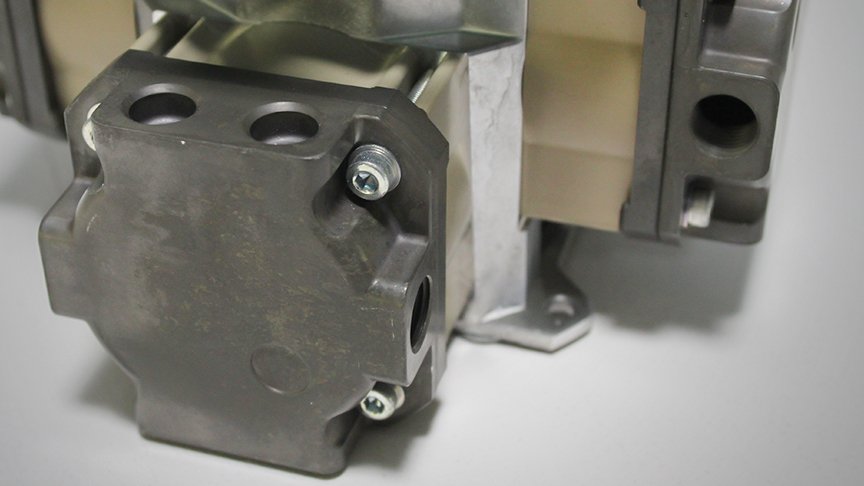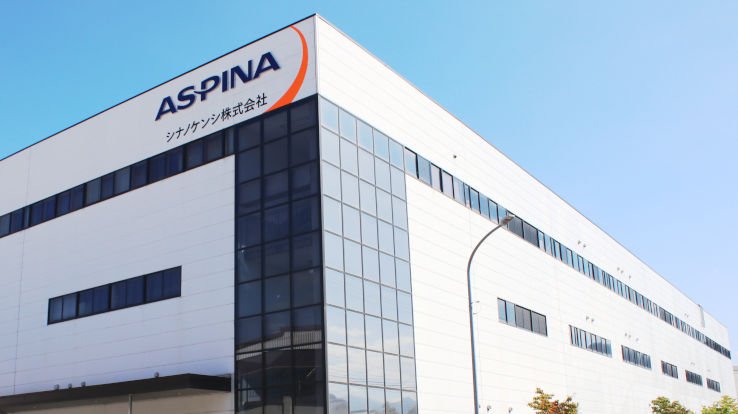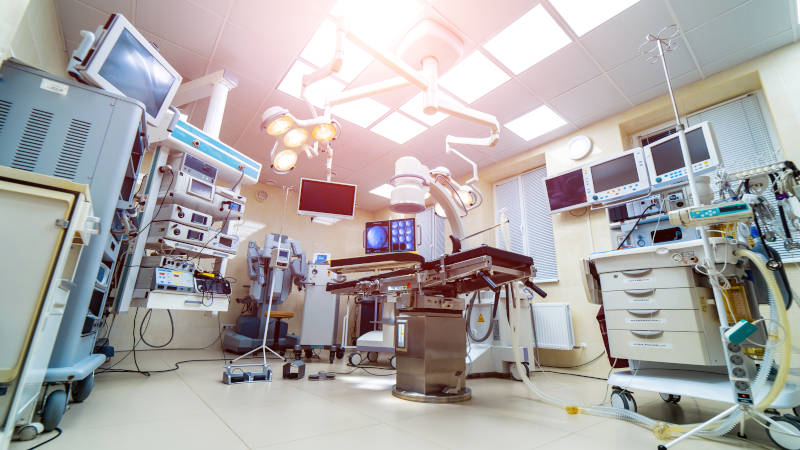A journey of structural improvements: ASPINA's compressor revolutionizes portable medical devices
-
Health & wellness
-
Portable oxygen concentrator
-
Rehabilitation
-
Laboratory analysis systems
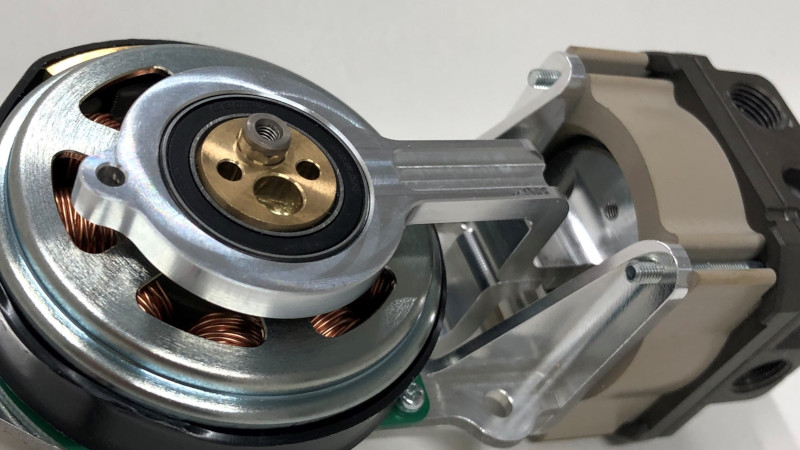
ASPINA is developing 12L compressor to meet growing demand for smaller oxygen concentrators and other portable medical devices
ASPINA is currently working on developing a 12L compressor that weighs only 460g and is 452cm3 in size. The primary objective of this project is to cater to the growing demand for smaller medical devices and analytical instruments that require a compact, high-powered compressor. With structural improvements, this compressor is designed to be small enough to fit into battery-operated portable devices like oxygen concentrators, dental units, rehabilitation equipment, and small analytical instruments.
One of the main reasons for this development is the growing demand for portable oxygen concentrators that are lightweight and small enough to be carried like a shoulder bag. A recent survey indicates that up to 53% of patients using portable oxygen concentrators desire improvements in portability, weight, and size. This highlights the need for smaller and more efficient oxygen concentrators that can be easily transported wherever the patient needs to go. To achieve this, compressors that are integrated into oxygen concentrators need to be downsized. Furthermore, developing smaller oxygen concentrators that can be used for various treatment methods requires a compact but high-powered compressor capable of not only respiratory synchronization but also continuous supply settings. As a result, the compressor's design needs to be revolutionary and innovative.
One cylinder with an outer rotor motor revolutionizes the compressor structural design
Kazuhiro Ueda, the chief engineer responsible for developing medical equipment products within ASPINA’s Medical Engineering Business Unit, played a crucial role in this project. He repeatedly reviewed whether this size and weight would meet customer requirements and made multiple proposals for the fundamental concept.
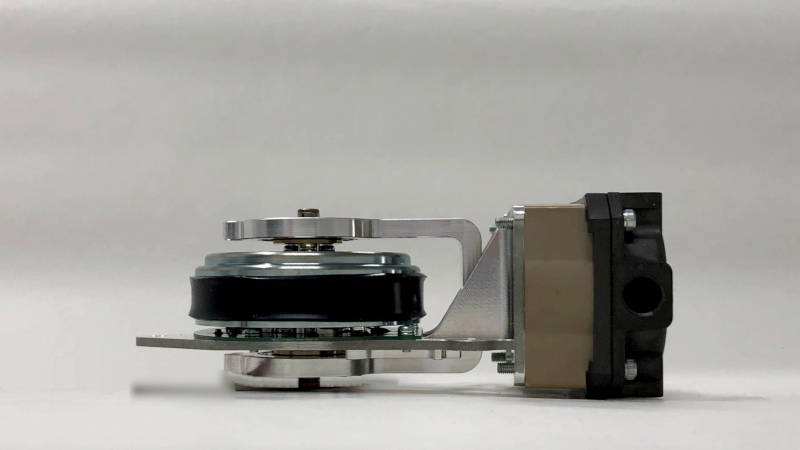 12L compressor exterior: linear configuration of outer rotor motor, piston, and cylinder
12L compressor exterior: linear configuration of outer rotor motor, piston, and cylinder
The weight of compressors increases as the number of cylinders increases. Ueda and his team decided to design the compressor with one cylinder because they determined that the size and weight of a 2-cylinder compressor would be too bulky. To ensure product reliability and longevity, they used cylinders and pistons ASPINA developed and currently uses in the oil-free compressors for medical equipment.
Many compressors on the market with similar performance use an inner rotor cylindrical motor that is long and slender in the axial direction. However, ASPINA chose to adopt a flat outer rotor motor from a variety of motor options, leveraging its shape to design a smaller compressor. The team arranged the cylinder and piston in the radial direction of the motor and positioned the flat motor's overall height to be less than the height of the cylinder. The connecting rod that transmits force to the piston is shaped like a fork to distribute the load while preventing uneven weight distribution and is affixed to the disk-shaped crank on both ends of the motor shaft.
Compact yet powerful: ASPINA’s 12L compressor attracts portable device developers
The small size and high output of the compressor make it attractive to developers of portable medical devices. The compressor's design ended up being thin and flat, making it easy to fit into medical equipment. The motor we chose is a brushless DC motor with an outer rotor type, 62mm in diameter. The team considered not only the structural advantages of downsizing but also the motor's characteristics. The outer rotor motor has a large moment of rotation, making it suitable for compressors that supply gas continuously. With a rotation speed of 1,500-2,500rpm, a rated pressure of 140kPa (20psi), and a rated flow rate of 12L/min, the compressor delivers sufficient output for supplying compressed gas.
The table below is the major developing specifications of the 12L compressor:
| Item | Development specification |
|---|---|
| Application | Portable oxygen concentrators (POCs), rehabilitation equipment, small analytical instruments |
| Rated pressure | 140kPa (20psi) |
| Rated flow rate | 12L/min |
| Rated rotation speed | 2,500rpm |
| Weight | Approx. 460g |
| Dimensions | 136 x 66.5 x 50mm |
| Operating temperature range | 5 to 40°C |
| Supply voltage (typical) | 24V |
| Design life | 8,500 hours |
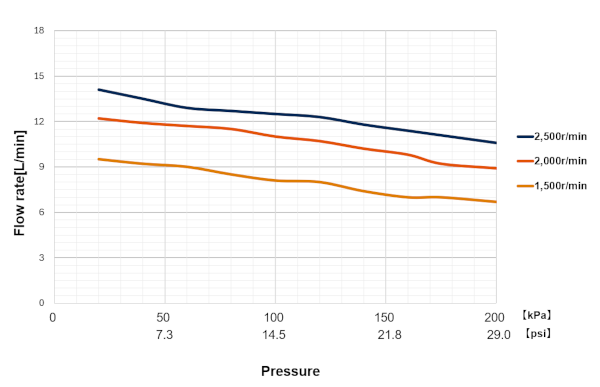 P-Q characteristics of 12L compressor
P-Q characteristics of 12L compressor
"When we first developed the compressor, our customer appreciated the fact that we were able to produce 12L/min of output with this size and weight," Ueda said. Throughout the development process, Ueda and his team persistently asked themselves if they could make the compressor smaller and better. Their mindset and proactive approach ultimately led to the successful development of the compressor that met their goal. ASPINA's personality, characterized by this type of thinking and action, helped them develop a compressor that is attractive to customers with its small size and high output.
ASPINA's compressors: enabling mobility and efficiency in medical and analytical equipment
Medical devices and analytical instruments have traditionally been limited by their size and weight, making them difficult to transport and limiting their use to specific locations such as hospital patient rooms and laboratory analysis rooms. To improve patient quality of life and increase device operating rates, there has been a need for smaller and more portable devices. ASPINA's 12L compressor is the ideal solution to meet these evolving needs.
ASPINA offers a range of compressor sizes and configurations, from 1-cylinder to 4-cylinder models, and is continuously expanding our line up based on size, weight, required flow rate, and pressure. In addition, custom designs are available to cater to unique needs that cannot be met by ready-made compressors. By leveraging our technology, ASPINA is enabling the development of smaller, more portable medical devices and analytical instruments.
To learn more about how ASPINA can support your business needs, please do not hesitate to contact us.
Related information
Exhibition information
-
Jul. 9, 2025
-
May 19, 2025
-
Dec. 27, 2024








